|
For people with compromised gut function including malabsorption, UltraGI Replenish® is a medical food that offers a targeted nutritional approach to support the intestinal lining and the beneficial gastrointestinal (GI) microbiota usually established through appropriate nourishment early in life.* UltraGI Replenish features a key prebiotic, known as 2’-fucosyllactose (2’-FL),* identical to one found in breast milk, that research suggests may be significant in promoting a healthy balance of beneficial GI microbiota beginning in infancy and continuing throughout life.1
UltraGI Replenish comes in both chocolate and vanilla flavors and can simply be mixed with water, unsweetened alternative milks, or fruit or vegetable juice. But for those looking for a little more variety, these six additional and tasty options are here to tantalize the palate. For all of these recipes, add ingredients in a blender and blend to desired consistency. Adjust water or ice for desired thickness. Mango Refresher INGREDIENTS:
Refreshing WatermelonINGREDIENTS:
Spinach Avocado SurpriseINGREDIENTS:
Raspberry DazzleINGREDIENTS:
Orange Carrot BlastINGREDIENTS:
Green Power Punch INGREDIENTS:
This content is not intended as a substitute for professional medical advice, diagnosis, or treatment. Individuals should always consult with their healthcare professional for advice on medical issues. Submitted by the Metagenics Marketing Team Reference: 1. Vandenplas Y et al. Nutrients. 2018;10(9):1161.
0 Comments
Going gluten-free?
No doubt you’re experimenting with gluten-free alternatives of your favorite foods. However, as discussed in my prior post, “Going Gluten-Free? Don’t Make This Mistake!” relying on gluten-free packaged foods can take a toll on your budget, blood pressure, waistline, and digestion. The alternative? Rather than swapping out one package for another, shift your diet away from processed foods and toward more whole foods. If your goal is to improve your health, an upgrade to a whole foods diet is a smart start. Many people find the approach so satisfying that they don’t want to go back to their prior diet. So don’t just go gluten-free. Go beyond gluten-free! Of all the meals, most people find breakfast is the one they need to plan ahead the most. Why is breakfast important?
In the last decade or so, the interest and use of probiotics have skyrocketed. According to Statista.com, sales of probiotic supplements in the United States amounted to $1.4 billion in 2014 and are projected to grow exponentially in the coming years.1 With numerous commercials on television these days advertising the various health benefits that probiotics can provide, have you ever wondered about giving probiotics to your kids?
What are probiotics? The human microbiota are very diverse and consist of 10-100 trillion bacteria living in the various tissues of the body such as the skin, mouth, and gut.2 Most of these bacteria live in our gut and are resistant to the colonization of bad bacteria, act as key players in the process of gut immune system development, and form short-chain fatty acids (SCFA), a major energy source for cells in the colon.3 The microbiota continue to evolve as we age and are influenced by what we eat, our body composition, how much sleep we get, how many antibiotics we take during our lifetime, and the amount of daily stress we experience.4 One way to support healthy microbiota is to create a balanced environment of different types of bacteria. We can do this by supplying our bodies with more beneficial bacteria, called probiotics. The Food and Agriculture Organization of the United Nations (FAO) and the World Health Organization (WHO) define probiotics as “live microorganisms that, when administered in adequate amounts, confer a health benefit on the host.”5 Some examples of food sources that contain these beneficial bacteria are yogurt, kefir, miso, kimchi, tempeh, and sauerkraut. It might be difficult to obtain the amount of beneficial bacteria from probiotic-rich food alone; therefore, incorporating a probiotic supplement that offers a stable and reliable source of gut-friendly bacteria as part of your daily regimen might be a good idea.* Use of probiotics in children There is an increased interest in the use of probiotics in children because of the growing evidence that suggests that these gut-friendly bacteria may convey numerous health benefits to kids, as well. Some of the most studied probiotics are L. rhamnosus GG (LGG), B. lactis, L. reuteri, and S. boulardii.6-8 How to choose a probiotic Probiotics have a specific, designated nomenclature based on their genus, species, and strain. The most commonly recognized probiotic genera include Lactobacillus and Bifidobacterium3 and are used in many functional foods and dietary supplements. If you choose to give probiotic supplements to your children, consider the following:
References:
Healthcare practitioners may find their patients benefit from the 5R protocol. We sat down with Mark Kaye, DC to discuss the use of the 5R GI restoration program.
What is the 5R protocol? The 5R protocol is a means of helping to restore the natural balance of the gastrointestinal (GI) system. The GI system can become compromised even through typical lifestyle patterns. The GI system is a very complex environment because it is the main means of communication that our body has with the outside world. It’s a very complex organ system. There’s a couple of pounds of bacteria in the gut. There are digestive enzymes that have to break down foods. So it’s a means of taking each of the different functions of the gut and to try to bring them back into balance. How did the 5R program come about? One of the first topics discussed as a Functional Medicine parameter was GI restoration. However, we can go back literally hundreds of years if you think about how traditional food patterns utilized components such as fermented foods, that was part of the health process of many traditional food patterns. The integrative medicine model took much of its influence from the naturopathic profession. In the naturopathic model, gut health overlies many aspects of systemic health. How healthy the gut is, is a reflection of how healthy the body is. What are the five elements of the 5R program? The first of the 5Rs is remove, which is removal of any type of undesirable organisms that may be residing in the gut. Part of that dysbiosis may be undesirable bacteria, undesirable fungi, which are impacting the health of the GI tract. In addition would be removal of irritants from the diet. Wheat and gluten may be an example of one. Other common allergens such as fish may be of concern in some individuals, or tree nuts. These are all healthy foods, but in some individuals they contribute to immune dysregulation, irritation, and damage to the gut. The second phase of 5R is replace. A key function of the GI tract is digestion, taking complex foods and breaking them down into their individual components so that we can properly absorb fats, properly absorb carbohydrates for energy, but also to break down proteins so they can be absorbed and used for the normal building and maintenance process of the body. That requires quite a few different types of digestive enzymes including hydrochloric acid in the stomach, pancreatic digestive enzymes, and certainly bile. The third phase of the 5R GI restoration program is reinoculation. Again, there are literally trillions of bacteria that reside in our gut that are part of a so-called normal flora or the microbiome of the GI tract. These can be negatively impacted by many different factors in our environment. From stress to diet to lifestyle, patients who may not get sufficient rest, as examples. Reinoculation is bringing a few desirable species and strains of bacteria back into the system and allowing the GI tract to be a hospitable environment. The fourth phase of the program is regenerate. The GI wall is a tube that has desirable compounds, nutrients that need to be let in, but undesirable compounds need to be kept out and eliminated through the feces. It’s constantly turning itself over. The cells are regenerating and repairing themselves. That regeneration process requires both macronutrients such as proteins and specific fibers as well as micronutrients, which work to keep that cell wall healthy and to keep it from becoming a leaky tube that allows undesirable compounds to be absorbed. Last but not least is retain. Once you’ve taken that patient through this entire process of GI restoration, they have to be able to maintain that normal GI environment, so that’s going to require a healthy diet, proper vitamin and mineral intake, appropriate protein intake, and again, maintaining a healthy diet means staying away from things that are potentially harmful. How does the program work? This is a GI restoration program. It’s asking the practitioner to determine what is most important in this individual. Not everyone is going to require each step of the 5R program. For example, a patient may have very effective digestion, sufficient hydrochloric acid, good bile production in the liver, appropriate pancreatic enzyme release, so the replacement phase of the 5R program would not be required for that individual. Let’s look at the first phase: remove. That patient and practitioner may have already determined what specific foods are problematic for that patient or what specific lifestyle factors have been impacted, so they may not need that individual phase. There may be specific things that may be needed in an individual patient, or a patient may be able to bypass that phase completely. Can two or more 5R elements be undertaken simultaneously? Very appropriately! For example, if we talk about removal, part of that removal would be a strategy to remove undesirable bacteria from the gut. Anytime you’re removing undesirable bacteria in the gut, you want to replace that with something else, or reinoculate. So the removal and reinoculation phases can often go together. What’s very important is to continue the reinoculation phase a couple of weeks at least after stopping the removal phase. The same thing with the regenerate. Since the health of the GI tract is highly nutrient-dependent, you have to feed that gut well and make sure you’re getting the baseline nutrient requirements for that patient. Outside of diet, are there any lifestyle changes that you recommend while patients are undergoing the 5R program? Just anything that’s related to a healthy diet. So proper exercise is certainly very important. Certainly we understand the use of fiber as part of that and other dietary components. But exercise stimulates intestinal function. Gravity is important for intestinal function. So get up and go! We’re far too sedentary. Very similarly with stress, we look at emotional or physical stress on the body; it changes our chemistry, so anything that reduces stress. One of the best ways we can help to reduce stress is proper sleep. The 5R program is not simply a GI restoration program; it’s a GI restoration program as part of a comprehensive diet and lifestyle intervention in patients. How would a patient get started on the 5R program? Find an experienced practitioner who understands the 5R program and can assess whether a 5R program would be appropriate. A practitioner can help the patient to discover the triggers for different diet and lifestyle habits that have led to the problem. I think anytime we’re dealing with any type of chronic illness, anytime we’re ready to make a major dietary lifestyle change where we’re ready to eat healthier, find a healthcare professional who can help us through it. Don’t do it on our own. Mark A. Kaye, DC, Senior Manager, Medical Information, Medical Affairs Dr. Kaye started with Metagenics in June 1995 and has been leading seminars, speaking internationally, writing, and supporting practitioners through programs including Innovative Practice Solutions (IPS) and FirstLine Therapy (FLT) ever since. Mark manages the Metagenics Medical Information team, providing practitioner support for medical foods, functional foods, and dietary supplements in clinical practice. In addition, Mark supports Metagenics International Distributors in their clinical and product needs and is involved in compliance with U.S. and Canadian dietary supplement regulations. Dr. Kaye received his Doctor of Chiropractic degree from the Los Angeles College of Chiropractic and was in private practice in Southern California for approximately 10 years prior to joining Metagenics. In addition to licensure in California, Dr. Kaye was also licensed to practice chiropractic in Arizona and Maine. By Whitney Crouch, RDN, CLT
Probiotics. We’ve all heard the buzzword, and many are now familiar with the term the “good guys” in the gut…but what do they do? What are they, exactly? Do prebiotics act alongside probiotics? How are they beneficial to the host or their gut microbiota? These are questions that have been explored recently, and the answers are only the beginning of where the science of prebiotics and probiotics will go. Probiotics
The two most investigated prebiotics are fructans and galactans. Fructans include inulin and FOS, which can be found in many common foods, including blue agave, chicory root, garlic, onion, Jerusalem artichokes, leeks, asparagus, dandelion greens, and bananas.6 GOS, a functional alternative to HMOs, are found in infant formulas and are also found in seaweed and legumes like chickpeas, lentils, kidney beans, and green peas.7 Whereas the average dietary fiber supports the health of both the “good” and “bad” microbiota in our guts, prebiotics are more targeted in that they selectively support the microbiota that support the host—the humans or animals that the microorganisms live in. How do prebiotics work to support probiotics and human health? Prebiotics are fermented by human gut microbiota (remember: probiotics help colonize the gut with healthy microbes) into short-chain fatty acids (SCFAs) acetate, propionate, and butyrate. SCFAs are increasingly recognized as signaling molecules that mediate the interaction between the diet, the gut microbiota, and the host.8 Locally in the gut, SCFAs serve as energy substrates for cells of the colon and play a role in host metabolism.8-9 A fraction of the colon-produced SCFAs reach the systemic circulation and directly affect the function and metabolism of peripheral organs and tissues, such as the liver, the pancreas, adipocytes, immune cells, and skeletal muscle tissue. Studies show that the permeation of SCFAs throughout the body are involved in maintaining glucose and lipid metabolism and may provide an important target for other facets of health as well.9 There are health benefits to be had for individuals consuming probiotics with prebiotic compounds; however, there may be contraindications for some patients. It should be noted that people with sensitivities to fermentable oligosaccharides, disaccharides, monosaccharides, and polyols (FODMAPs) should use caution and consult a knowledgeable healthcare practitioner before incorporating higher amounts of prebiotic foods or supplements. The market for supplements containing prebiotics or pre-/probiotic combinations and the body of research science supporting their clinical use are both growing, with more discoveries and targeted approaches to be revealed. It’s important to choose high-quality supplements to ensure the best symbiotic relationship between pre- and probiotic strains, which in turn can increase the efficacy of this combination. References
Go with Your Gut: A Guide to Probiotics
In recent years, the number of gut-related doctor visits has been as high as 30 million annually.1 And more and more people are turning to probiotics to help support gastrointestinal (GI) health. What many do not know is that these tiny, “friendly” bugs can be beneficial for more than just gut health. Why Probiotics? Your body contains a delicate balance of diverse bacteria. Probiotics act as “friendly” bacteria and are an important ally to help support your intestinal ecosystem. It’s important to know, however, that these microscopic organisms do not all share the same personality. Strain Identification and Why It Matters Many probiotic formulas on the market are nonspecific about their applications. And that’s no surprise—considering many of these formulas contain organisms that are not strain-identified. This makes it even more difficult to choose the right formula. In fact, only a handful of probiotic strains have been researched extensively. Make sure you pay attention to the product label, and look for a genus, species, and strain (e.g., Lactobacillus acidophilus NCFM). This should appear as two long Latin words (genus first and species second) followed by a series of capitalized letters and/or numbers (the strain). Keep this tip in mind when you shop for a probiotic formula. Different Strains for Different “Gains” There is no one-size-fits-all formula. Scientific evidence has indicated that the effectiveness of probiotics for targeted areas of health support depends on the strain.2 That’s why it’s important to consult your healthcare practitioner before starting a probiotic regimen. Refer to this quick guide for a better understanding of probiotic strains and their health benefits. Gastrointestinal health
References:
by Noelle Patno, PhD
For mild and occasional diarrhea, consider these approaches:
References:
By Noelle Patno, PhD
If you’re having trouble with that more substantive trip to the restroom, there may be some simple behavioral habits to implement to resolve your issues. Most of the popular press, common opinion, or typical Google searches may suggest that constipation is difficulty in producing stool, having infrequent stool, or having hard and small stool, caused by 1) dehydration, 2) lack of fiber in the diet, or 3) a sedentary lifestyle. However, there may be more lifestyle reasons for consideration when there is an interruption in the motility of the intestine.2 Let’s examine in more detail common causes of what we may consider mild and occasional constipation. Common causes of constipation
If you suffer from occasional or mild constipation, this list of contributing lifestyle factors might be worth a look. As always, you should discuss any concerns you may have with your healthcare practitioner. References:
By Noelle Patno, PhD
For mild and occasional constipation, consider these potential, evidence-based, approaches: Water intake:
Resources:
Almost everyone has heard of probiotics and how helpful they can be for gut health, but the word “prebiotics” can seem a little confusing. The definition and scope of prebiotics have been evolving as researchers increase their understanding of prebiotic mechanisms in the body, but questions, such as how prebiotics differ from probiotics and how many types of prebiotics are there, remain.
What are prebiotics? Prebiotics are a class of compounds recognized for their ability to be selectively utilized by host microbiota to the benefit of the host.1 The intestinal microbiome consists of many different types of microbes, and prebiotics provide the fuel for probiotics to thrive and support human health. For example, consumption of prebiotics may lead to increased numbers of beneficial bacteria such as Bifidobacterium and Lactobacillus, which can help stimulate the immune system and may help positively affect blood lipids.1 Essentially prebiotics are the food that probiotics need to spring into action within the gut. A probiotic meal ticket Prebiotics literally are the meals that probiotics need to consume in order to thrive and help support a healthy gut microbiota. Small amounts of prebiotics are found in certain foods. For example, the prebiotic inulin is found in asparagus, bananas, barley, chicory root, garlic, honey, Jerusalem artichoke, onions, and rye.2,3 Prebiotics are also found in mother’s milk (human milk oligosaccharides, or HMOs) and are thought to help colonize the infant’s intestinal microbiota with beneficial bacteria. 4 Supplementation with prebiotics directly delivers this fuel source to the probiotics in the gut. Types of prebiotics There are many types of prebiotics, including certain kinds of fats (CLA, conjugated linoleic acid, or PUFAs, polyunsaturated fatty acids), HMOs, phenolics and phytochemicals, readily fermentable dietary fibers, and oligosaccharides. 1 Oligosaccharides include fructose, glucose, galactose, mannose, and xylose. These are the most well-known prebiotics:
How much? While there isn’t a standard or recommended amount yet, supplementation and/or consumption of foods with added prebiotics can help achieve daily intake of these important compounds. Submitted by the Metagenics Marketing Team References:
|
Categories
All
Archives
April 2024
|
|
Join Our Community
|
|
Amipro Disclaimer:
Certain persons, considered experts, may disagree with one or more of the foregoing statements, but the same are deemed, nevertheless, to be based on sound and reliable authority. No such statements shall be construed as a claim or representation as to Metagenics products, that they are offered for the diagnosis, cure, mitigation, treatment or prevention of any disease. |


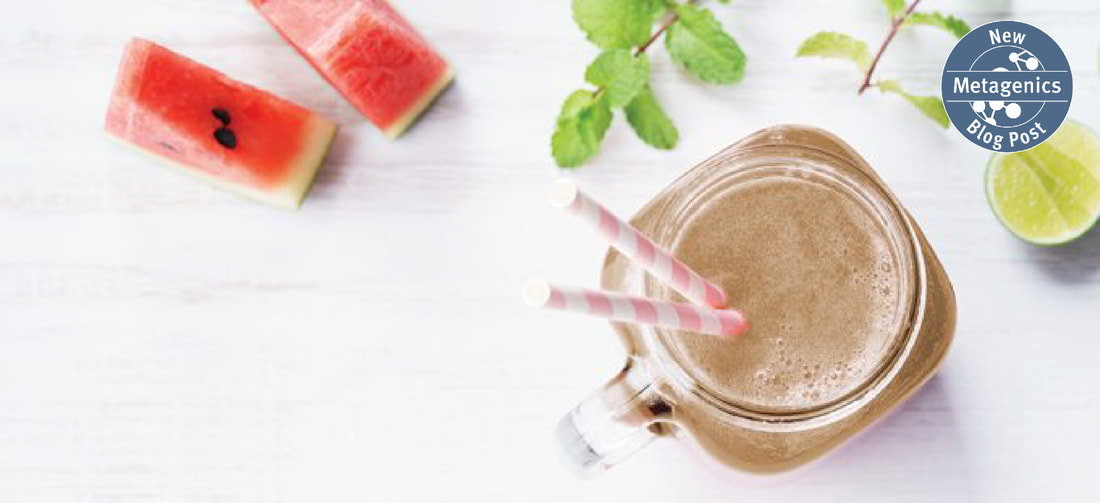
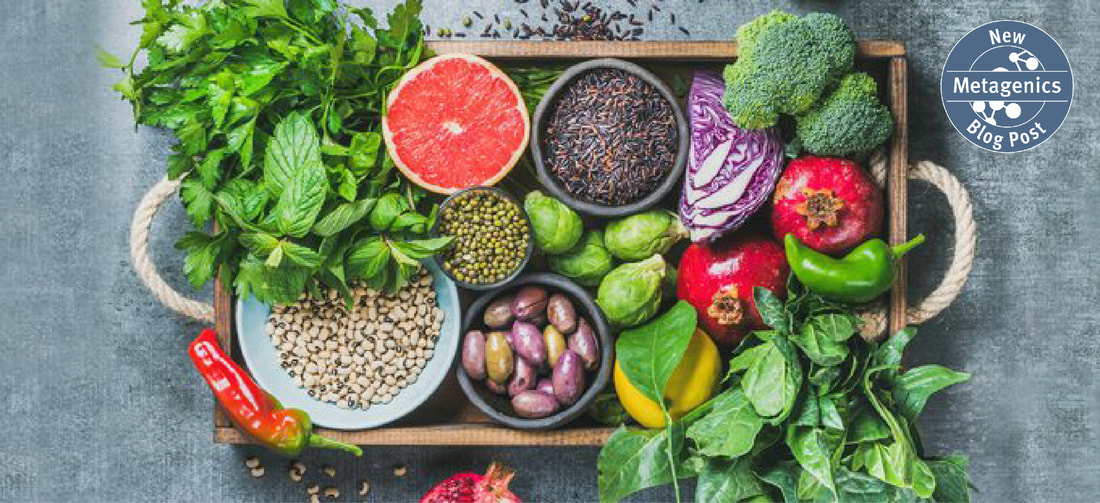
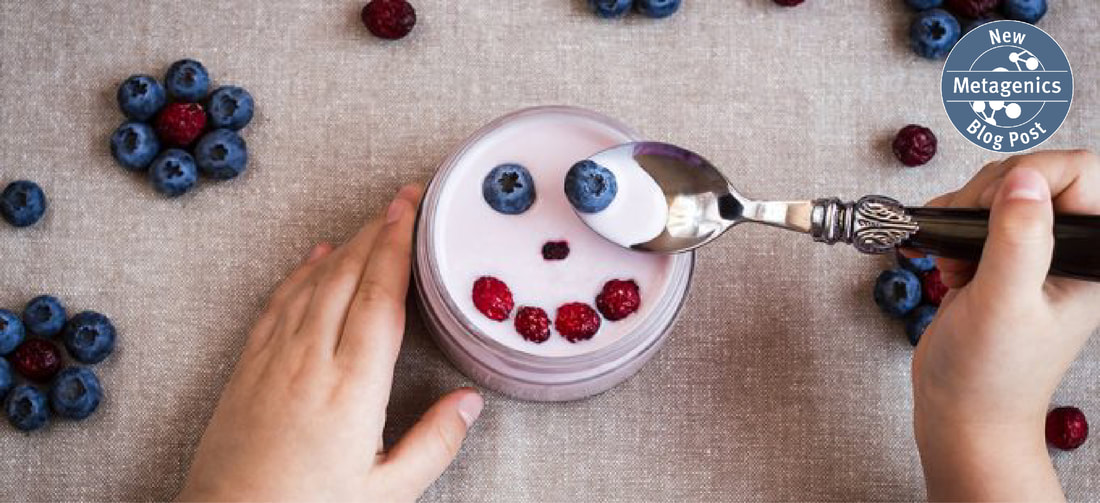


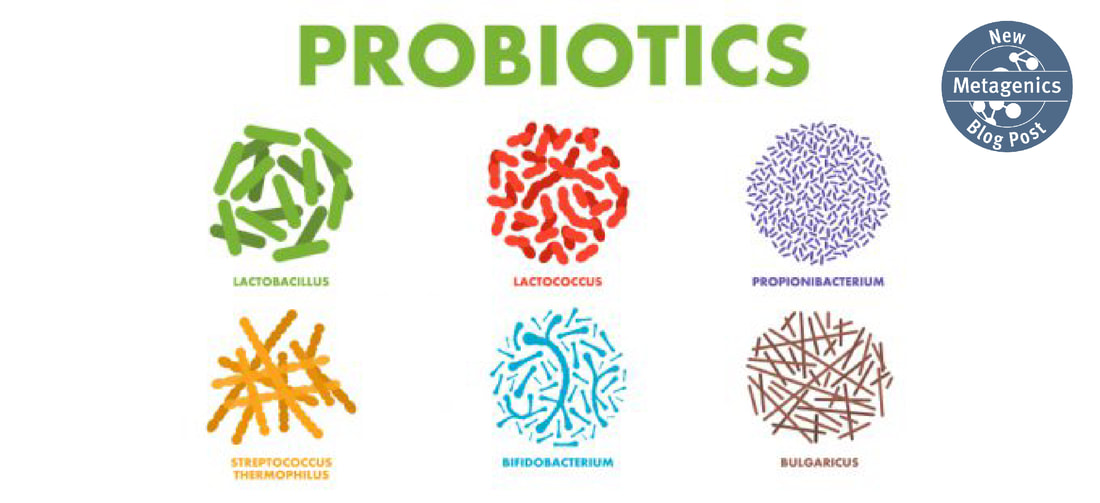

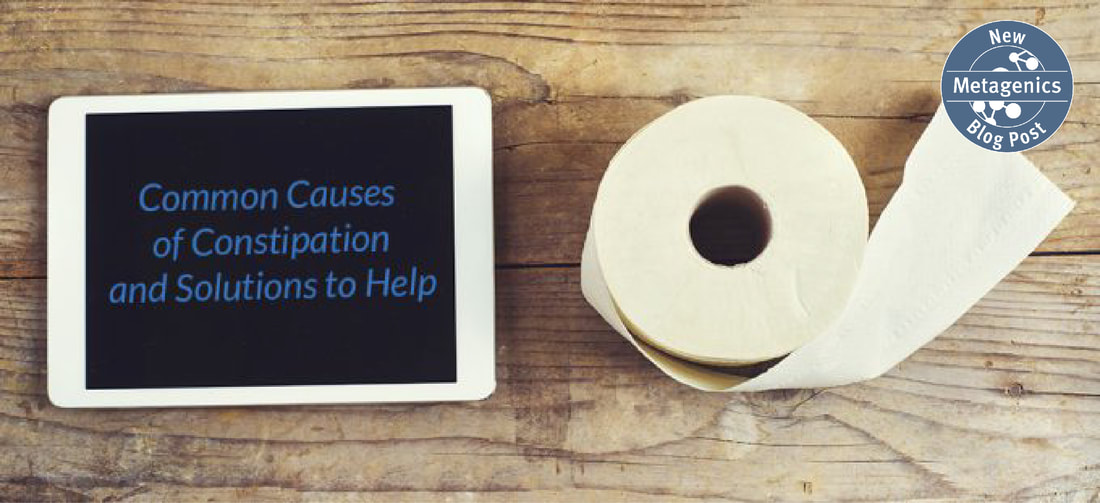


 RSS Feed
RSS Feed